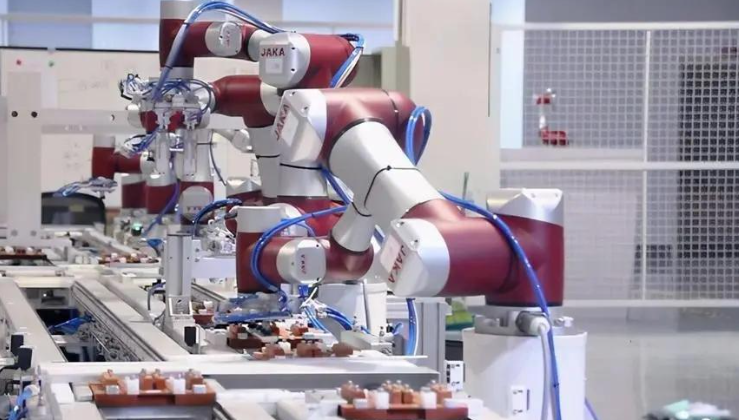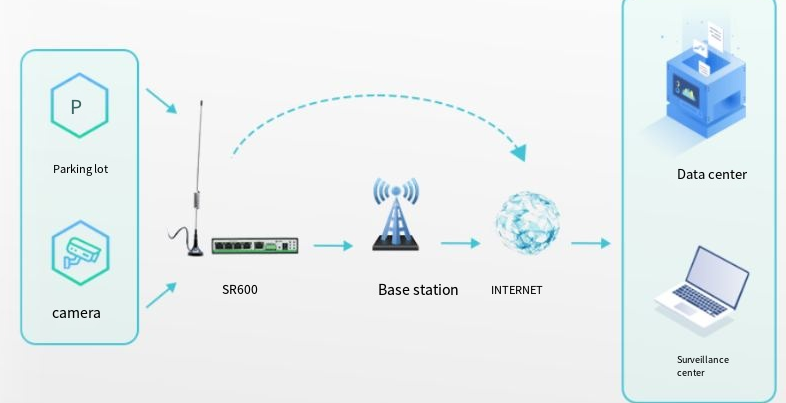
While 5G communication has not yet become widespread worldwide, and many users only perceive it as faster internet speeds, the United States, across the Pacific Ocean, has already sounded the horn for a communication battle.
Now, the United States is preparing to join forces with ten countries, including Japan, South Korea, and the United Kingdom, to compete with China for the right to set 6G standards. They really think highly of China! These developed countries are becoming increasingly less confident in their technological capabilities. Will they succeed this time?
The key to setting communication standards lies in who holds the most patents. Currently, the United States holds about 35.2% of the patents in 6G technology, while Japan holds 13%. How many does China have? The answer is quite surprising: 40.3%, ranking first in the world.
With China taking the lead, the United States wants to bring along a group of allies this time. However, unlike the 5G communication battle, it won’t be as simple as whoever has the loudest voice gets to control the discourse. Compared to 5G, 6G technology is not just a quantitative change, but a qualitative one. Even if the United States and Japan combined have a 48.2% patent share, they are not fully confident in winning against China. The key lies in whether we hold the crucial patents.
 The biggest difference between 6G and 5G communication technology is the signal transmission method. The transmission of 5G signals is not much different from 4G and 3G, except that the signal frequency is higher. 4G is above 1.8GHz (gigahertz), while 5G, represented by millimeter waves in the United States, has a frequency of over 6GHz. One clear indicator for 6G is that it must reach the terahertz level, meaning the signal frequency is above 100GHz, a tenfold increase.
The biggest difference between 6G and 5G communication technology is the signal transmission method. The transmission of 5G signals is not much different from 4G and 3G, except that the signal frequency is higher. 4G is above 1.8GHz (gigahertz), while 5G, represented by millimeter waves in the United States, has a frequency of over 6GHz. One clear indicator for 6G is that it must reach the terahertz level, meaning the signal frequency is above 100GHz, a tenfold increase.
This raises a problem. We all know that the higher the frequency of electromagnetic waves, the shorter the wavelength, and the shorter the wavelength, the poorer the obstacle penetration ability. When the frequency is below 10GHz, signals can still cover obstructed areas through diffraction. Obstacles like walls and large trees have an impact on signal transmission, but not significantly. However, once the frequency exceeds this level, it approaches the spectrum of molecular rotational energy levels. In other words, a single water molecule can block 6G signals, severely weakening the signal transmission distance.
Consequently, the coverage area of communication base stations will also shrink. In a country as large as China, 5G requires millions of base stations. If remote and uninhabited areas are included, the number of signal base stations is incalculable. If 6G is to become widespread, it is estimated that hundreds of thousands or even millions of signal base stations will be needed.
 Currently, there are solutions. One is to create compact and affordable quantum cascade lasers, which are the foundation of 6G base stations. Another is spatial multiplexing technology, using multiple transmitting and receiving antennas for separate data transmission and reception, which needs to be matched with beam shaping.
Currently, there are solutions. One is to create compact and affordable quantum cascade lasers, which are the foundation of 6G base stations. Another is spatial multiplexing technology, using multiple transmitting and receiving antennas for separate data transmission and reception, which needs to be matched with beam shaping.
It can be seen that the electromagnetic wave signal transmission of 6G communication is entirely different from the previous 5G. As long as a few key patents are held, one can gain the initiative in setting 6G communication standards.
Relevant research institutions in China have predicted that the most optimistic timeline for achieving 6G communication is 2035, and that is just achieving it, not covering the entire country.
What impact will the realization of 6G communication have on our daily lives? It is not as simple as downloading movies faster.
First, indoor positioning will be more precise, accurate to the centimeter level, while outdoor positioning can reach below one meter. The connection density will be super high, enabling hundreds of devices to interconnect within one square meter, making smart homes possible.
Second, 6G will help the development of brain-computer interfaces. This technology has already been applied on a small scale, connecting sensors with mobile phones and transmitting the commands people think of to corresponding devices. For example, on a cold winter day, if you are lying in bed and don’t want to get up to turn off the lights, you only need to think, “turn off the lights,” and your home’s lights will automatically switch off.
After turning off the lights, if a thief enters your home to steal, the scenario immediately appears in your mind. Then you think, “I should call the police.” Without dialing, the police have already received your emergency call. This is the Internet of Everything. With 5G, you can use mobile phones to connect everything, while 6G plus brain-computer interfaces can realize the connection between everything and the brain. Thoughts in the brain can control everything because the communication speed can keep up with the jumping speed of human brain thinking.
 Doctors can perform complex surgical experiments remotely. For example, if you are in Guangdong and need an appendectomy, you can apply for a doctor from Peking Union Medical College Hospital in Beijing to perform the surgery. As long as you have the terminal equipment for the surgery, the doctor can operate remotely. The key to achieving this lies in low communication latency. The latency of 6G communication will not exceed 0.1 milliseconds, which is imperceptible to humans because our brain’s fastest reaction is 0.03 seconds, or 30 milliseconds.
Doctors can perform complex surgical experiments remotely. For example, if you are in Guangdong and need an appendectomy, you can apply for a doctor from Peking Union Medical College Hospital in Beijing to perform the surgery. As long as you have the terminal equipment for the surgery, the doctor can operate remotely. The key to achieving this lies in low communication latency. The latency of 6G communication will not exceed 0.1 milliseconds, which is imperceptible to humans because our brain’s fastest reaction is 0.03 seconds, or 30 milliseconds.
Intelligent robots will adapt to more complex work. The emergence of 6G can truly transform the currently popular AI technology into productivity. Thousands of robots can share the brain of a supercomputer. Because of the high transmission rate, the robot’s brain can be placed outside its body, allowing it to be very large, making robots more intelligent. The delay in robot movement is also very low, so they can handle many more tasks, such as screwing screws so fast that the assembly line smokes.
Are you looking forward to 6G?
 KEY-IOT
KEY-IOT
 The biggest difference between 6G and 5G communication technology is the signal transmission method. The transmission of 5G signals is not much different from 4G and 3G, except that the signal frequency is higher. 4G is above 1.8GHz (gigahertz), while 5G, represented by millimeter waves in the United States, has a frequency of over 6GHz. One clear indicator for 6G is that it must reach the terahertz level, meaning the signal frequency is above 100GHz, a tenfold increase.
The biggest difference between 6G and 5G communication technology is the signal transmission method. The transmission of 5G signals is not much different from 4G and 3G, except that the signal frequency is higher. 4G is above 1.8GHz (gigahertz), while 5G, represented by millimeter waves in the United States, has a frequency of over 6GHz. One clear indicator for 6G is that it must reach the terahertz level, meaning the signal frequency is above 100GHz, a tenfold increase. Currently, there are solutions. One is to create compact and affordable quantum cascade lasers, which are the foundation of 6G base stations. Another is spatial multiplexing technology, using multiple transmitting and receiving antennas for separate data transmission and reception, which needs to be matched with beam shaping.
Currently, there are solutions. One is to create compact and affordable quantum cascade lasers, which are the foundation of 6G base stations. Another is spatial multiplexing technology, using multiple transmitting and receiving antennas for separate data transmission and reception, which needs to be matched with beam shaping. Doctors can perform complex surgical experiments remotely. For example, if you are in Guangdong and need an appendectomy, you can apply for a doctor from Peking Union Medical College Hospital in Beijing to perform the surgery. As long as you have the terminal equipment for the surgery, the doctor can operate remotely. The key to achieving this lies in low communication latency. The latency of 6G communication will not exceed 0.1 milliseconds, which is imperceptible to humans because our brain’s fastest reaction is 0.03 seconds, or 30 milliseconds.
Doctors can perform complex surgical experiments remotely. For example, if you are in Guangdong and need an appendectomy, you can apply for a doctor from Peking Union Medical College Hospital in Beijing to perform the surgery. As long as you have the terminal equipment for the surgery, the doctor can operate remotely. The key to achieving this lies in low communication latency. The latency of 6G communication will not exceed 0.1 milliseconds, which is imperceptible to humans because our brain’s fastest reaction is 0.03 seconds, or 30 milliseconds.


